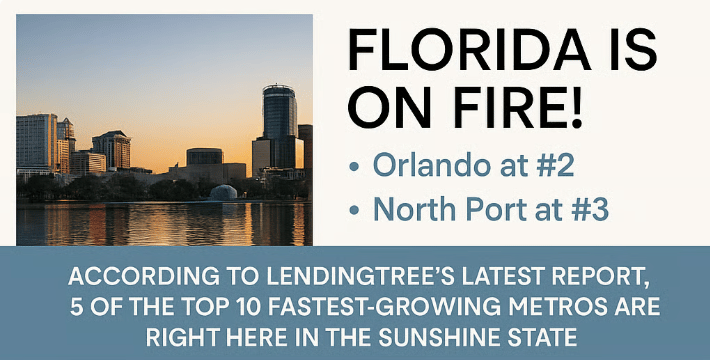Florida’s Affordability: Price vs. Income


ORLANDO, Fla. – The Florida real estate market has experienced significant shifts in recent years, particularly between 2020 and 2022. During this period, the median sale price for single-family homes surged by 40%, while median household incomes increased by only 12%. Despite rising interest rates that reduced purchasing power, limited inventory kept home prices higher than historical averages across the state.
Understanding the relationship between median sale prices and household incomes provides insight into the broader economic landscape. A growing disconnect between these two figures reveals much about the demographics of homebuyers and those who are increasingly priced out of the market.
Income vs. Home Prices: A Widening Divide
Historically, an old personal finance rule of thumb suggested that homebuyers should aim to purchase a home costing roughly three times their annual income. For instance, in 2012, the median sale price for a single-family home in Florida was $145,000—just slightly above three times the median household income of $45,000. At that time, home prices and incomes were relatively aligned.
However, in recent years, this balance has shifted dramatically. By 2022, the median-priced home cost six times the median household income, highlighting a significant imbalance between earned income and housing prices. This widening gap poses challenges for many potential homebuyers, especially those relying solely on earned income.
Factors Contributing to the Disconnect
Several factors have fueled this growing disparity between home prices and incomes:
Equity Transfers from Other Markets: Individuals relocating from more expensive regions often bring substantial equity, allowing them to outbid local buyers in Florida's comparatively lower-priced market.
Equity Within Florida: Even within the state, homeowners selling larger properties with significant equity can leverage this advantage to purchase smaller or similarly-sized homes, further driving up prices.
Low Inventory: Many homeowners with low interest rates are reluctant to sell, leading to a shortage of available homes and maintaining high prices.
Limited Wage Growth: Although wages have increased, the Federal Reserve’s efforts to curb inflation mean rapid wage growth isn’t expected, which could otherwise help bridge the gap between incomes and home prices.
Beyond Earned Income: Retirees and younger individuals with inherited or acquired wealth often rely on passive income sources like retirement accounts, Social Security, or investment dividends. As more wealth flows into Florida, the gap between earned income and the cost of living becomes even more pronounced.
Navigating a Changing Market
The Florida real estate landscape has evolved rapidly over the past few years. Staying ahead of these trends is crucial for both buyers and sellers. Consider the shifting financial dynamics in your local market. Are home prices outpacing incomes, or is there a more balanced situation? Understanding these trends allows you to approach each transaction with insight and creativity, positioning yourself to better serve your clients in an increasingly complex market.
Stay up to date on the latest real estate trends.

July 23, 2025

June 20, 2025

June 9, 2025

May 23, 2025

May 9, 2025

April 24, 2025
Luxury Market Continues to Grow: Q1 2025 Snapshot
You’ve got questions and we can’t wait to answer them.